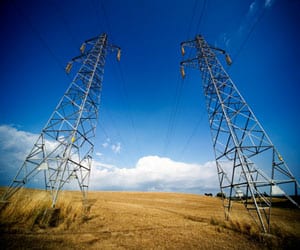The electricity industry is making a rapid transition towards 100% renewable energy, but do we know for sure how to keep the grid stable without any old-style, ‘synchronous’ coal generators?
Australia’s energy ministers are poised to release a proposal from Energy Security Board for a redesign of the National Electricity Market. This question of ‘security’ will be a key issue.
Historically, coal generators have supplied up to four-fifths of Australia’s electricity. Since 2010, 12 coal power stations have retired and there are 18 left in the NEM.
In March 2021 EnergyAustralia announced it would close the Yallourn power station in 2028. We need to redesign the system to be secure without coal.
Everyone knows that coal generators provide energy but they also provide what is called ‘security’ services. New research shows that batteries and clean energy technologies are able to provide security. This allows coal power stations to retire safely.
What grid ‘security means’
Coal and other ‘synchronous’ generators hold the frequency and voltage of the alternating current within a safe range.
The frequency of the electricity in the grid must be kept close to 50 Hz or equipment will fail. Most frequency control is provided by electrical inertia from big spinning turbines at coal, gas and hydro power stations.
Inertia is a property of the current in the grid across a whole state (and even across interconnectors).

Voltage control is measured in terms of system strength. System strength is a local property of the distribution or transmission network. It is provided by large generators and also by specialised grid elements that do not supply energy.
Most commonly these are synchronous condensers, consisting of a turbine-flywheel set that can spin freely.
If we cannot source new sources of ‘inertia’ and ‘system strength’ from clean energy technologies then it might be necessary to pay for coal generators to keep operating even after they are no longer commercially viable.
How batteries solve the problem
Batteries were originally built to help smooth out the variable output of wind and solar. But it turns out they can do everything a generator can and more besides. They are rapidly evolving the capability to provide inertia and system strength.
The inverter which connects the battery to the network can be programmed to lower or increase frequency and voltage very quickly and precisely.

A coal generator is only able to provide an inertial response equal to its capacity for around three seconds. A battery can provide inertia until its energy store is depleted.
The planned 350 MW battery that will be developed in Victoria by EnergyAustralia is likely to be able to provide at least three times as much inertia as the retiring Yallourn coal-fired power station.
Innovation is lowering the cost
The largest frequency control service in the National Electricity Market (NEM) provides active power to push up frequency for six seconds following a disturbance. In this market, batteries are providing about a third of supply, competing against a coal fleet almost 70 times larger.
Batteries have only been allowed to compete in Frequency Control Ancillary Services markets since 2017. They are already setting the price and eating in to the market share of conventional generators.

A project in northern Queensland changed how the inverters at four large solar farms respond to changes in network voltage and they now provide system strength. The cost of this is was to be around 4% the cost of a conventional synchronous condenser.
Governments must lead
Last month the Energy Security Board gave federal and state energy ministers options for redesigning the NEM. Minister Taylor has sat on it since then but is due to be released next week. A critical ‘Post-2025’ reform is to fix the inertia and system strength rules.
The federal energy minister Angus Taylor can show leadership by calling on the ESB to remove regulatory barriers to batteries, promote innovation and facilitate state energy policies.
The Renewable Energy Zones being built by the states will bring in around 40 GW of generation and many GW of storage. This new energy supply plus a new procurement system for inertia and system strength will allow Australia to rapidly decarbonise our electricity system securely.
The current system misallocates risk to renewable energy projects. The ‘do no harm’ principle forces them to pay for system strength weakness that they are not responsible for. The ‘causer pays’ principle penalises them for variability of solar and wind output that they are not responsible for.
Ultimately, inertia and system strength are both public goods and should be procured efficiently on behalf of all consumers.
The Australia Energy Market Operator is best placed to make this happen, and already reports on plans for remediating emerging inertia and system strength shortfalls. A new procurement system will be judged a success if it leads to investment in innovative new solutions.










